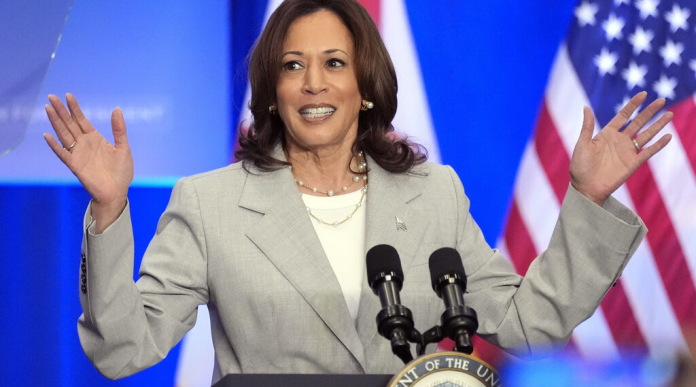The U.S. dollar experiences a decline in the first trading session of the week as traders shift away from positions that benefited from expectations of a Donald Trump victory in the upcoming presidential election. Currency markets adjust following reports that Democratic Vice President Kamala Harris is gaining ground in the race.
On Monday, the U.S. Dollar Index (DXY), which tracks the greenback against a basket of six major currencies, drops to a nine-day low. This fall follows polls indicating that Harris now leads the presidential race, signaling a reversal from the dollar’s recent strength, which had been driven by positive economic data and speculation that Trump would win the election.
Traders had recently favored the dollar based on the belief that a Trump presidency would push for inflationary policies, benefiting the currency. However, recent polling suggesting that Harris’ chances are improving weakens this momentum.
Kamala Harris Gains Momentum
Harris sees a rise in support across various polls, though the race remains tight. On election betting platforms, Harris edges ahead on PredictIt, while Trump still maintains a lead on Polymarket.
If Harris were to win, analysts anticipate potential inflationary pressure, which could lead to higher U.S. Treasury yields and a stronger dollar. However, the fluctuating outlook has left markets uncertain about the eventual impact on the currency and U.S. bonds.
Markets React to Trump’s Economic Strategy
Markets express concern over Trump’s protectionist trade policies, which could hurt exports and exacerbate inflationary pressures. This uncertainty adds to the volatility of both the U.S. dollar and bond markets, which are expected to experience fluctuations depending on the election outcome.
Shares of Trump Media and Technology Group, the owner of Truth Social, surge 12% on Monday after recovering from significant losses earlier in the day. The stock, which had risen sharply from $16 in early October to over $50 by the end of the month, has recently faced declines due to market instability tied to the election.
The ongoing election uncertainty also influences the dollar, with investors cautious about the potential for significant changes depending on which party controls both the presidency and Congress.
Markets Eye U.S. Fed Decision
Attention turns to the U.S. Federal Reserve’s upcoming two-day meeting, which concludes on Thursday. The central bank is expected to announce a 25-basis-point interest rate cut, with traders closely watching for any signals that the Fed may delay further cuts in December.
October’s U.S. jobs report shows weaker-than-expected job growth, raising questions about the health of the labor market. The report, which is partly influenced by recent strikes and economic disruptions, has led to debates over the Fed’s next move. While investors had anticipated fewer rate cuts after strong employment gains in September, the CME Group’s FedWatch Tool now suggests an 82% likelihood that the Fed will proceed with a rate cut in December.
Globally, other central banks, including the Bank of England, the Riksbank, and the Norges Bank, are also expected to adjust their interest rates in their upcoming meetings.














